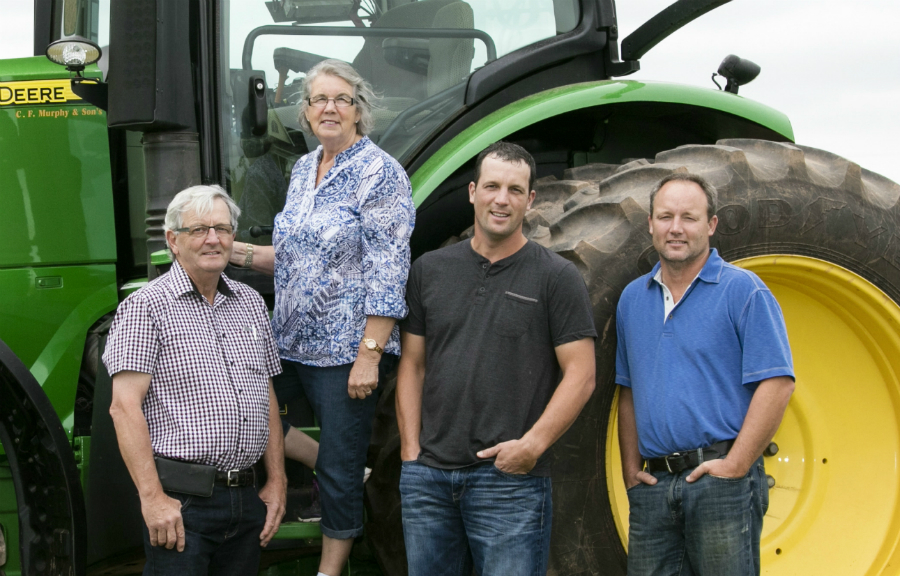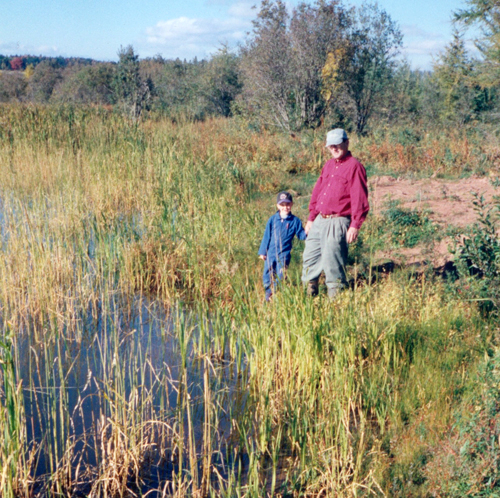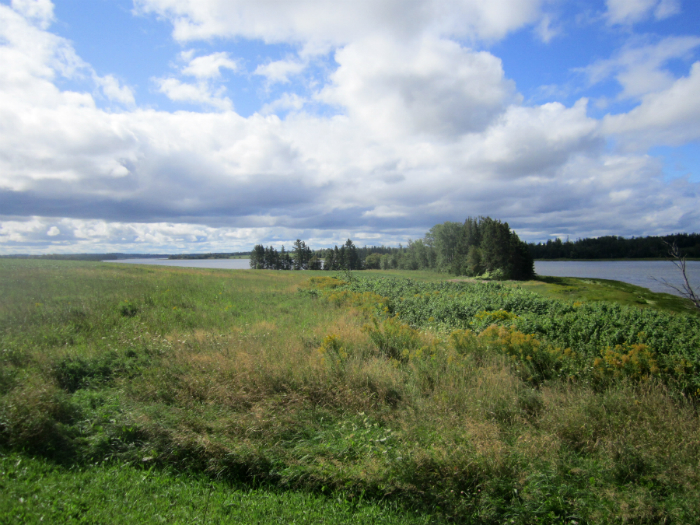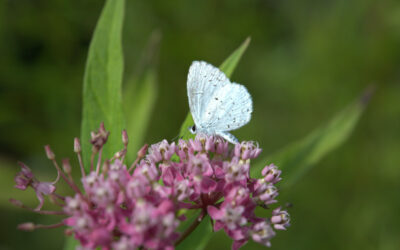An architect of the PEI ALUS program describes why it works—taking his own farm as an example.

ALUS participants Charles (on L) and Wilhelmena Murphy, with their sons Francis and Randy (on R) Murphy, of China Point, PEI, incorporate many ALUS projects into their family farm.
PEI ALUS participant Charles Murphy is no stranger to agriculture. For 50 years, he has been growing seed potatoes, wheat and non-GMO soybeans in China Point, ten kilometers east of Stratford, PEI.
Before him, four generations of the Murphy family farmed on Prince Edward Island, since their arrival from Ireland in the early 1800s.
He also played a prominent role in developing PEI’s ALUS program a decade ago, having served as member of its initial External Advisory Committee in 2008.
Charles and his wife, Wilhelmena, purchased the family farm in 1972. Their sons, Randy and Francis, have since become part of the family business, and their grandkids are poised to become the seventh generation to continue the family tradition.

Charles and Wilhelmena’s grandkids are poised to become the seventh generation to continue the family tradition of agriculture. Here, an older photo shows Charles and his grandson, Joshua Hayden, visiting one of the many wetlands on their farm, one that is being protected by the Murphy’s ALUS projects. Through ALUS, they have established wider buffer zones around their wetlands, as well as the shoreline. Photo: Charles Murphy
“To my mind, there is a strong case for the ALUS program as the most innovative way to help reduce the footprint of modern agriculture on the natural environment,” he says. “ALUS is certainly helping us do more for wildlife and the environment on our farm.”
Specifically, ALUS helps the Murphy’s maintain nearly five acres (two hectares) of grassed waterways and other soil-conservation structures in their fields to reduce soil erosion, as well as 52 acres (21 hectares) of land retired from agriculture to become buffer zones for wildlife habitat.
One of these ALUS buffer zones serves to separate the working areas of the farm from the Seal River, a major waterway that flows into Orwell Bay. Tidal and brackish in this area, it is an important staging area in the fall for migratory birds, particularly waterfowl, and is important economically for PEI’s commercial fish and shellfish industries.
The ALUS buffer zone protects more than 1,600 feet (500m) of shoreline, adding 65 feet (20m) to the width of the provincially mandated 50-foot (15m) buffer zone.
This set-aside area helps to prevent soil runoff into the water, which would have negative impacts on birds and aquatic wildlife.
“We are now seeing more wildlife using these areas, specifically more eagles, ospreys, hawks, owls and coyotes,” says Charles.
Charles has seen a lot of changes in agriculture over the years. “When I was young, I drove horses with my father and today, my sons and I drive equipment controlled by computers and satellites from outer space. The only constant is that water still runs downhill, and it will take your soil with it if you are not careful. If you take care of your soil, it will take care of you,” he says.
“I am not at all surprised that PEI farmers have embraced the ALUS program,” he continues. “PEI’s main economic engine is agriculture, so it is significant to have a program that helps share some of the costs for the environmental-stewardship actions that farmers need to take for the good of the community.”
ALUS, the community has a mechanism for encouraging farmers to devote some of their land, their skills and their time to producing ecosystem services, like cleaner air, cleaner water, more biodiversity and more pollinators, in addition to producing farm crops for the table.

This ALUS project serves to separate the working areas of the farm from the Seal River, a major waterway that flows into Orwell Bay. The river is tidal and brackish in this area, and it is an important fall staging area for migratory birds, particularly waterfowl. The project helps to prevent soil runoff into the water, which would have negative impacts on aquatic life. The ALUS expanded buffer zone protects more than 1,600 feet (500m) of shoreline, adding 65 feet (20m) to the width of the provincially mandated 50-foot (15m) buffer zone. Photo: Shawn Hill



